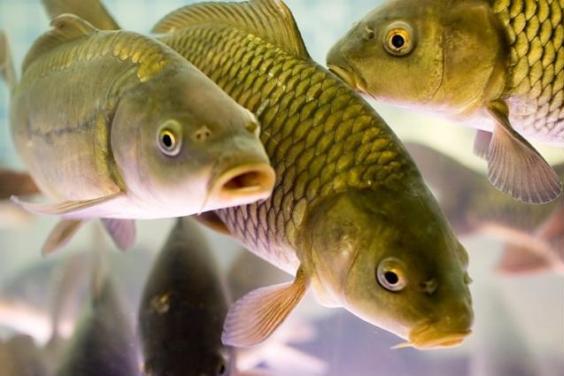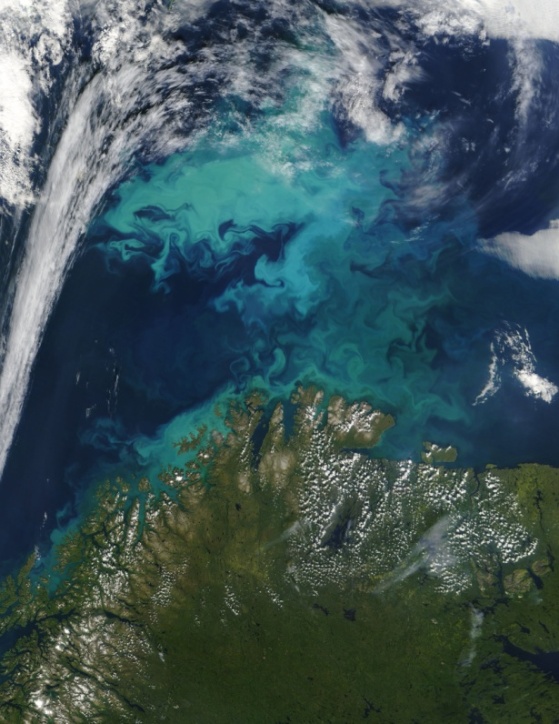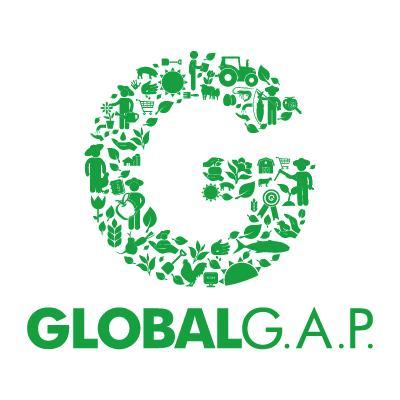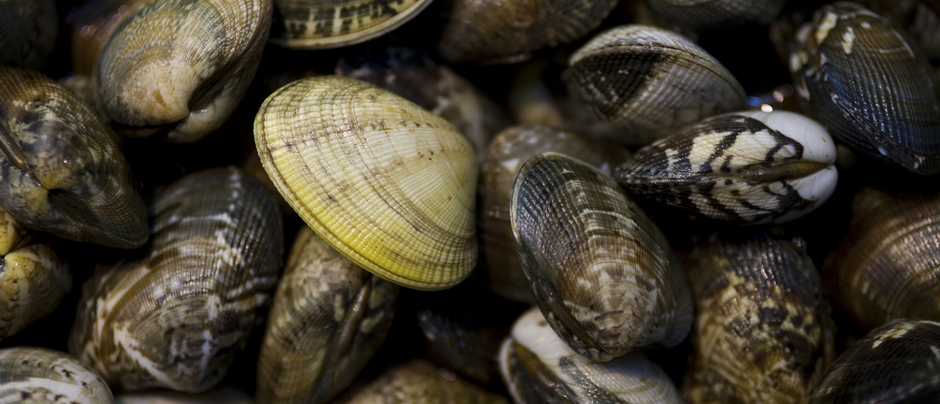Agricultural insurance from an Asian perspective: pathway to productivity
Agriculture is a high-risk sector. Farmers in Asia must cope with severe droughts, floods, typhoons, frosts/freezes, and other events that are increasing with climate change. The coronavirus pandemic brought an additional dimension to farmers’ risk exposure and endangered food security. Within a holistic risk management system, agricultural insurance plays an outstanding role. It mitigates the consequences of unpredicted losses, smooths income volatility, protects farmers from bankruptcy, and leads to improved productivity. It also helps to achieve the UN Sustainable Development Goals (SDGs). Agricultural insurance systems are not equally developed throughout Asia. Some countries like India, Japan, the Republic of Korea, the Philippines, and Turkey have undergone a long evolutionary process to establish efficiently functioning systems with significant market penetration. Other countries, particularly island nations, are still in the relatively early stages of agricultural insurance development. Agricultural insurance in Asian countries operates in the form of public schemes or public–private partnerships (PPPs). In other countries outside Asia, e.g., Australia and South Africa, agricultural insurance is operated as a purely private system. In Asia, governments subsidize insurance premiums and provide regulatory support, sometimes with coverage of catastrophic losses. Best-practice examples of public schemes are observed in Japan and the Philippines, and those of PPP in Turkey. Agricultural insurance has limitations and should be utilized as only one element of a broader holistic risk management strategy. The successful development of agricultural insurance requires substantial government commitment and investment. However, this investment will ultimately result in improved agricultural productivity, increased farmers’ resilience under adverse circumstances, stable national food security, and meeting the SDGs. BACKGROUND General overview of Asian agriculture In many low- and middle-income countries in Asia, agriculture continues to be an extremely important sector that contributes significantly to GDP while meeting basic needs for food and material. Agricultural operations in Asian countries are generally small scale and intensive with a high proportion of irrigated cropping in the winter dry season and monocrop cultivation of paddy rice throughout much of South Asia in the summer monsoon season. The livelihoods of many of the poorest households in the region are supported by off-farm employment and income that act as a buffer in the event of major catastrophic events (typhoons, floods, or tsunamis). Remittances from abroad are also very important in some Asian countries such as Bangladesh, Indonesia, Nepal, the Philippines, and Thailand. Agricultural productivity The agricultural industry worldwide is becoming more technological and input/outcome efficient. This trend includes adoption of precision farming, remote-sensing technology, and digital decision-making tools as well as the use of new, more resilient and productive seed varieties and other inputs. In some countries, small farms are merging into larger production units. Farm size matters. At the beginning of the growing season, farmers must invest in purchases of seeds, fuel, fertilizers, etc. Poor small farmers in Asia generally choose low-priced input supplies (seeds, fertilizers, etc.) of correspondingly lower quality. The final crop productivity outcome will also be marginal. While small farmers achieve average wheat or rice yield levels of 2 t/ha, larger, more sophisticated holdings can expect much higher potential crop yields of 9 t/ha for wheat and 6 t/ha for rice. The same holds true for dairy farming: differences in the milk yields between small and large operations can be as much as 5-fold. Low productivity only enables farmers to cover their initial investments (or production costs) but does not provide a sufficient margin for a decent life throughout the year until the next season’s harvest. Thus, farmers living on the edge of basic survival obviously do not have the resources to modernize their operations or to cope with unexpected disasters. In other words, they have little resilience in the face of adverse circumstances. Farmers’ risks The agriculture sector has always been prone to an astonishingly wide range of risks. Those risks potentially affect almost every aspect of their well-being: productive capacity; property and possessions; life and health; and financial future. The main category of risk is weather related such as droughts, hailstorms, floods, high winds, storms, and heavy frosts and freezes. When those weather events reach extreme magnitudes, they fall into the category of catastrophes, along with earthquakes and volcanic eruptions, for example. Climate change is increasing such risks in the form of later spring frosts, prolonged droughts, and heavier rains. Most farmers are aware that the weather patterns observed today were not seen even 10 years ago. The new climate also increases outbreaks of pests and diseases. As a result of all these, farm incomes have become more volatile and farmers more financially vulnerable. Agriculture in the Asian region is regularly exposed to major climatic risks such as typhoons, floods, droughts, and tsunamis. In the most northerly territories (e.g., Japan, Mongolia, and Nepal) agriculture is also at risk due to hail, frosts and freezes, and snowstorms. Other common risks faced by farmers are more sporadic and individual like fires or machine-related accidents, livestock loss, or personal injury/disability as a consequence of accident or disease. Disease outbreaks on neighboring farms or in the surrounding area are also potential causes of significant loss. Marketing-related risks include fluctuations in commodity prices and fuel and other input costs. Farmers may also be forced to cope with political risks when, for example, the government changes agricultural regulations or policies resulting in decreased subsidies or increased taxes. Some risks can cause income fluctuations, others lead to total income loss, and significant widespread risks like prolonged droughts or powerful typhoons lead to asset loss. For example, in case of severe drought and lack of financial resources for alternative animal feed, farmers are forced to sell their livestock and thus lose assets that could ensure sustainability. The COVID-19 pandemic The current coronavirus (COVID-19) pandemic is endangering agricultural production and threatening the food security of every country. This situation is especially difficult in Asia with its preponderance of low/middle-income farmers. Since April 2020, in addition to the usual natural disasters, farmers have faced substantial disruptions in agricultural value chains: markets where they sell their products have been closed; and roads and other transport modes have been shut down, with trucks filled with agricultural products abandoned in the middle of highways in some cases. Farmers could not hire the usual temporary labor for harvesting. While people were required to self-quarantine in isolation, farmers still had to tend their fields/gardens, potentially endangering their own and their families’ health. Input suppliers increased the prices of their products, and traders could not reach farms to buy produce. As a result, many farmers are now in dire financial straits and require external support in order to continue production in the next season. Risk management Farmers must rely on a wide range of strategies to manage risks in agriculture. One good strategy is operation and income diversification, sometimes known as farm fragmentation. Since agricultural production is always risky and farmers’ incomes always fluctuate, generating income streams from unrelated activities is beneficial. This can take the form of planting different types of crops (for example, field crops and orchards), balancing between crops and livestock, or supplementing primary production with food processing. Where farms are generally small, off-farm income sources are sometimes even better alternatives. When it comes to financial/market risks, good mitigating tools are hedging and futures. These financial tools can protect farmers from significant commodity price drops. However, hedging and futures remain more suitable for larger, more sophisticated farming operations than for family smallholdings. Crop modeling is the prediction of future yields based on weather forecasting, soil conditions, and crop variety. It helps farmers make the right agronomic decisions leading to the optimization of inputs and maximization of yields. Maintaining farm health and safety include fire and disease prevention measures. These contribute simultaneously to the health of plants, animals, and humans. However, informal or farm-based measures cannot provide protection against severe threats like typhoons, floods, tsunami, and droughts. Such disasters require market-based, institutionalized protection mechanisms like insurance, hedging, and government assistance. AGRICULTURAL INSURANCE: A MARKET-BASED TOOL FOR RISK TRANSFER Functions of insurance Insurance transfers risk to a professional carrier, i.e., an insurance company, which charges a fee for assuming it. Risks that cannot be overcome or avoided by individuals and could potentially cause devastating losses should be insured against. In the rural sectors of many countries, insurance is commonly linked to bank credit. In those cases, insurers pay compensation directly to banks to cover yield or livestock losses experienced by farmers who are insured, wiping out their debts to the banks. Generally, agricultural insurance has the following functions:protecting investments;reducing the severity of losses or mitigating the financial impact of losses on farmers;smoothing income volatility;allowing investments in new technology, thus improving productivity;reducing poverty; andprotecting against bankruptcy, which in some cases means saving lives (for example, preventing the all-too-common suicides of Indian farmers faced with total crop losses due to drought).Agricultural insurance can also help nations meet the SDGs by:increasing productivity;improving livelihoods;enhancing the resilience of farmers and communities in adverse circumstances; andadapting to new challenges like climate change or pandemics.Agricultural insurance enables farmers to remain creditworthy even in years of major crop loss and thus avoid falling into the poverty trap. Generally speaking, agricultural insurance can save farmers from bankruptcy and governments from default. It plays an important role in reducing the vulnerability of the national food system to acute shocks, subsequently contributing to resilience and sustainability. Agricultural insurance in Asia The Asian region contributes around 20% of global agricultural insurance premium payments. PR China, India, and the USA are the world’s three largest markets. Agricultural insurance systems in Asian countries differ and include public or PPP programs. Several countries have a long history of public-sector crop and/or livestock insurance, e.g., India, Japan, the Republic of Korea, and the Philippines. Their public-sector programs target small and marginal farmers and are heavily subsidized. In Japan, agricultural insurance dates back to 1929 and its national cooperative agricultural insurance system receives major financial support (subsidies) from the government. Approximately nine million crop and livestock insurance policies are sold each year in Japan, with the agricultural insurance premium volume reaching over USD1.3 billion. Other countries have introduced crop insurance rather recently, i.e., over the past 15 years. This includes Turkey, Thailand (since 2007), Nepal (since 2009), Indonesia (since 2010), and Vietnam (pilot tested since 2008). The Pacific Island nations are not well served from an agricultural insurance perspective, since very few currently have any form in spite of their very high exposure to natural hazards (typhoons, flooding, tsunami, and El Niño/ENSO-related droughts). Existing programs include both traditional and index insurance coverage, with the traditional form more prevalent. Weather index insurance was first introduced in India in 2003 and has reached commercial scale, while the Philippines adopted some weather-based index products for specific crops. Other countries are experimenting with attempts to develop and implement index coverage. Mongolia has an unprecedented livestock index insurance system. In all Asian countries, central governments play crucial roles in establishing and supporting agricultural insurance schemes. The most common form of state support is insurance premium subsidies as provided by governments in India, Indonesia, Japan, the Republic of Korea, Pakistan, the Philippines, and Turkey. In startup situations, where there is currently no agricultural insurance supply, governments can play a very important role in creating the necessary infrastructure, including: establishing and overseeing the legal and regulatory framework; enhancing weather station infrastructure and related data and information systems; carrying out insurance product R&D; and arranging education, training, and capacity building for insurers, distributors (banks, microfinance institutions, input suppliers), and farmers. In some situations, it may also be cost-effective for governments to provide high-level catastrophe reinsurance protection. PPP schemes in India India has a huge number (approximately 120 million) of smallholder farmers. Their usual risks are low rainfall, price volatility, very unstable income leading to high debt, water scarcity, and limited access to resources and healthcare. Other problems arise from natural disasters and biological factors. The COVID-19 pandemic made life even more challenging for Indian farmers. Due to quarantine restrictions, they could not hire seasonal workers for rabi (crops sown in winter and harvested in spring) seasonal harvesting and were unable to sell or deliver their products to final markets. They simultaneously experienced losses from hurricanes and locust outbreaks in some regions. Since 1979, India has had a subsidized public-sector area-yield index multiple-peril crop insurance (MPCI) scheme in place. In 1985, the Comprehensive Crop Insurance Scheme (CCIS) was introduced. The CCIS was replaced by the National Agricultural Insurance Scheme (NAIS) in the 1999/2000 rabi season. In 2002, the Agriculture Insurance Company of India Limited (AIC), a specialist public-sector crop insurer, was formed by the government. Private insurers started to enter the agriculture insurance business in 2001. The system that exists now was launched in 2016. Named after the Prime Minister of India, the Pradhan Mantri Fasal Bima Yojana Program currently generates around €3.5 billion in insurance premiums covering around 50 million farmers. However, the Indian government has a strategy to increase the market penetration. At its core it is a type of area yield index insurance with pricing and loss adjustment based on crop cutting experiments (CCE). The current program covers only crops but not livestock. The frame insurance terms and rules are defined by the government, partly at federal and partly at state level. State and private insurers are invited to participate in state tenders in order to receive regional allocations where the insurance is sold. Currently, 18 insurers participate in the program. The state subsidizes the insurance premiums, making prices affordable for farmers. In instances of devastating losses, the state provides reinsurance to insurance companies. The premiums are partially reinsured by the national company GIC, and the remainder by international reinsurers. As with any insurance program, India’s has its challenges: 60% of crops are still not insured, especially high-value ones; livestock is not covered by the subsidized program; and the way government tenders are made creates a certain amount of volatility in insurance portfolios, meaning that insurers experience problems with reinsurance placements. Public program in the Philippines The Philippines is home to 5.2 million smallholder farmers. Each year, an average of 22 typhoons hit the country, some of which cause devastating destruction to agriculture. Crop insurance was first introduced in 1978 with the formation of the Philippines Crop Insurance Corporation (PCIC). The PCIC is 100% owned by government entities and subject to legislation and regulations. The central government financed the PCIC’s startup costs, and its main ongoing support for agricultural insurance is through premium subsidies for the PCIC’s main lines of rice and corn insurance. The PCIC offers comprehensive insurance programs for crops, livestock, fisheries, credits, and properties or assets owned by farmers for which the premiums are fully subsidized. Many of those agricultural insurance products are index based. The levels of customer service provided by the PCIC continue to be recognized as excellent. The two main insurance lines are MPCI policies for palay (rice) and corn, which account for the majority of PCIC premium income. Coverage includes losses due to natural calamities and pest and disease outbreaks. The main causes of loss are typhoons, floods, and drought. Pests and diseases are also significant factors contributing to claims filed. The PCIC also offers high-value commercial crop insurance as well as life and accident insurance to individuals or linked to loans from financial institutions to farmers and fishery workers. Recent success in Turkey Traditional agricultural insurance began in Turkey in 1957, but only 0.5% of agricultural areas in the country were insured before the state underwriting agency TARSIM was established.The previous situation was considered too unstable to serve as an effective platform for further development. In 2005, the Agricultural Insurance Act was passed allowing PPPs in Turkey’s agricultural insurance sector. Following the Spanish model, there are three key elements in the system: 1) mechanisms for public–private dialogue; 2) continuous updating of insurance contents; and 3) development of policy tools for dialogue with the government. Currently, Turkey has a robust PPP system of agricultural insurance offering products on crops, livestock, greenhouses, and aquaculture with total insurance premiums of more than €230 million and around two million policies issued yearly. It is managed and administered by TARSIM. Insurance covers such risks as hailstorms, floods, storms, whirlwinds, fires, earthquakes, landslides, and frosts/freezes for crops and all mortality risks for livestock. The levels of risk vary considerably by region, by type of farm, and by size of operation due to the different topographies and climatic conditions prevalent in different parts of Turkey. TARSIM therefore offers variable insurance rates depending on geographic location and risk zone. Twenty-four insurance companies participate in the program and cede the collective risks to the TARSIM pool, which in turn obtains reinsurance. TARSIM develops and provides the insurance rates, underwriting guidelines, and entire loss-adjustment infrastructure. Due to its systematic, scientific approach, the Turkish agricultural insurance portfolio has demonstrated stable profitable growth over the last 14 years. Despite being a relative newcomer to the global agricultural insurance market, TARSIM has assumed the role of a knowledgeable leader that shares its experience with governments and experts in other countries. Limitations of agricultural insurance Policymakers and end users often perceive insurance as a universal remedy for all problems. However, it is not a panacea and cannot replace a holistic risk management system. Agricultural insurance also has limitations and can only address some of the multiple risks the sector faces. Agricultural crop insurance is a restricted instrument that addresses only production and yield losses due to weather, natural, and (occasionally) biological risks. Crop insurance provides limited coverage from the time of sowing/planting, to the occurrence of emergencies, to completion of harvest. It does not, however, usually cover downstream sources of risk including postharvest storage losses or market price fluctuations. Agricultural insurance usually does not cover risk from the ground up, as there is always a mechanism of self-retention in the form of deductibles. Farmers are responsible for controlling this self-retention mechanism through improved farm management. Insurance covers the risk in the middle. When the risk reaches a substantial level, insurance may no longer be helpful. At that level, farmers need to seek government support or resort to another strategy. Recommendations Systems of agricultural insurance are not equally developed throughout Asia. While some countries like India, Japan, the Republic of Korea, the Philippines, and Turkey have completed evolutionary processes and have systems in place which operate more or less efficiently, other countries need to enhance insurance product development, sales intensification, and/or capacity building for national stakeholders. The key factor in the success of agricultural insurance is government commitment, as confirmed by the examples of the Philippines and Turkey. Clear government commitment and motivation also foster motivation among insurers and the insured to participate in agricultural insurance programs. It is a good practice to set up a national database that clarifies the extent of risk potentially affecting agricultural operations and how that affects decisions by stakeholders. When feasible, PPP agricultural insurance systems with responsibilities shared between public and private institutions are recommended. Within PPP systems, governments can provide support in the form of appropriate regulations, insurance premium subsidies, and backup for catastrophic losses. Another good practice is investing in capacity building or education and innovative technologies. Such investments will ultimately improve agricultural productivity, increase farmers’ resilience in adverse circumstances, ensure national food security, and help meet the SDGs. Authors: Shaikh Tanveer Hossain Olena Sosenko Material provided by:Agriculture Division, Asian Productivity Organization (www.apo-tokyo.org)
















